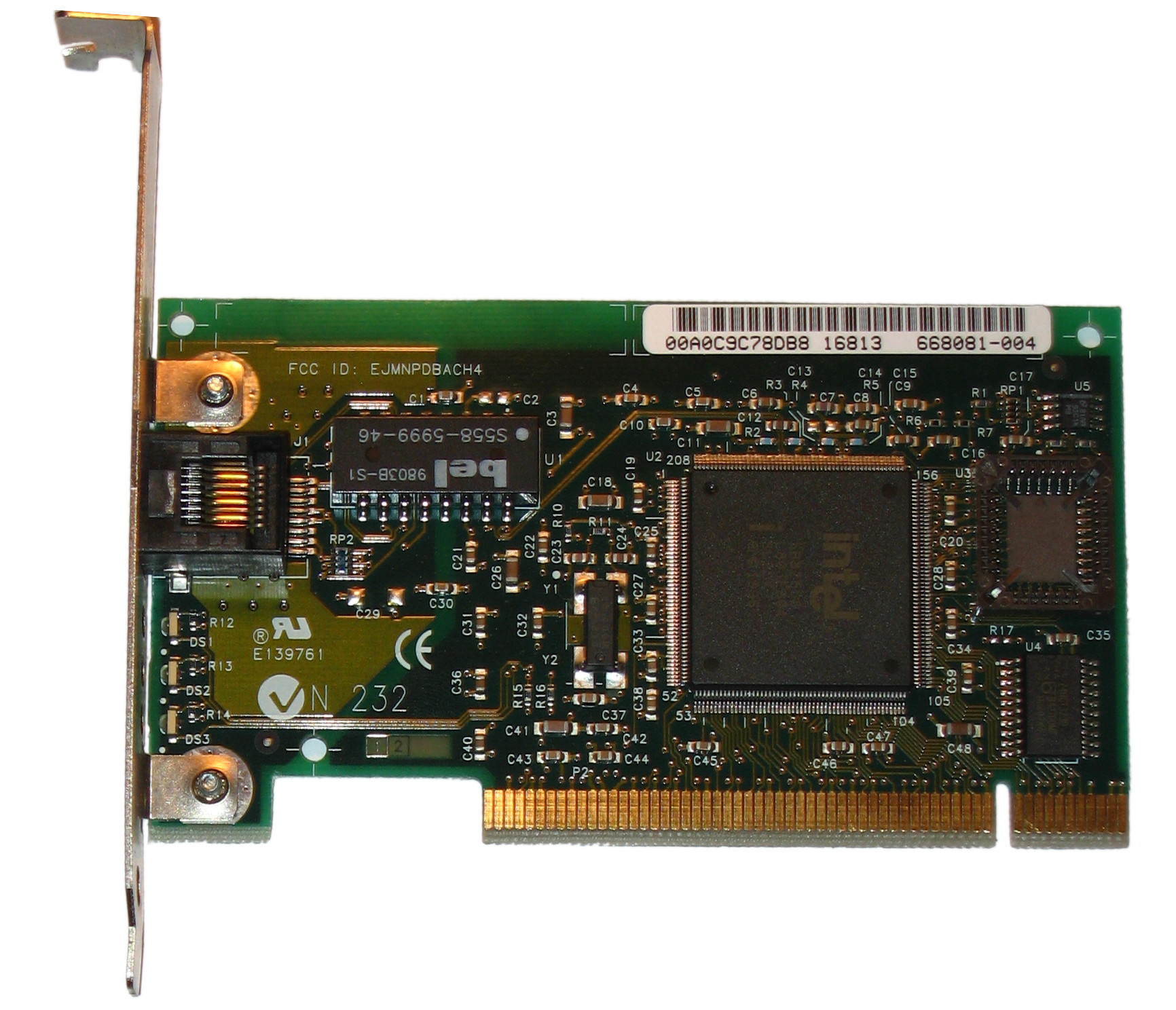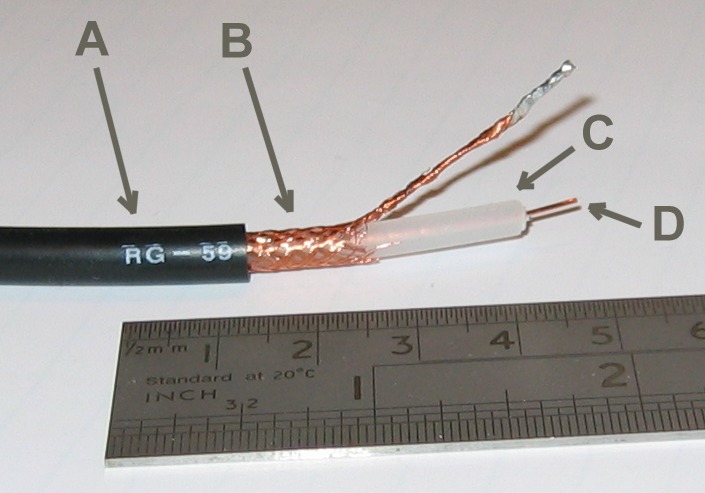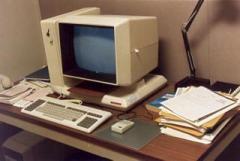|
Token Ring
Token Ring is a Physical layer, physical and data link layer computer networking technology used to build local area networks. It was introduced by IBM in 1984, and standardized in 1989 as IEEE Standards Association, IEEE 802.5. It uses a special three-byte frame (networking), frame called a ''token'' that is passed around a logical ''ring'' of workstations or server (computing), servers. This token passing is a channel access method providing fair access for all stations, and eliminating the collision (telecommunications), collisions of contention (telecommunications), contention-based access methods. Following its introduction, Token Ring technology became widely adopted, particularly in corporate environments, but was gradually eclipsed by newer iterations of Ethernet. The last formalized Token Ring standard that was completed was Gigabit Token Ring (IEEE 802.5z), published on May 4, 2001. History A wide range of different local area network technologies were developed in ... [...More Info...] [...Related Items...] OR: [Wikipedia] [Google] [Baidu] |
Ring Topology
A ring network is a network topology in which each node connects to exactly two other nodes, forming a single continuous pathway for signals through each node – a ring. Data travels from node to node, with each node along the way handling every packet. Rings can be unidirectional, with all traffic travelling either clockwise or anticlockwise around the ring, or bidirectional (as in SONET/SDH). Because a unidirectional ring topology provides only one pathway between any two nodes, unidirectional ring networks may be disrupted by the failure of a single link. A node failure or cable break might isolate every node attached to the ring. In response, some ring networks add a "counter-rotating ring" (C-Ring) to form a redundant topology: in the event of a break, data are wrapped back onto the complementary ring before reaching the end of the cable, maintaining a path to every node along the resulting C-Ring. Such "dual ring" networks include the ITU-T's PSTN telephony systems networ ... [...More Info...] [...Related Items...] OR: [Wikipedia] [Google] [Baidu] |
JetDirect
JetDirect is a line of external print servers formerly sold by Hewlett-Packard (HP). The JetDirect allows computer printers to be directly attached to a local area network. The "JetDirect" designation covers a range of models from the external 1 and 3 port parallel print servers known as the 300x and 500x, to the internal EIO print servers for use with HP printers. The JetDirect series also includes wireless print server (Bluetooth, 802.11b and g) models, as well as gigabit Ethernet and IPv6-compliant internal cards. History HP JetDirect was first introduced in March 1991 (code named QuickSilver) with the LaserJet IIIsi network printer (code named Eli). JetDirect is based on HP's MIO (Modular Input/Output) interface, which was designed from the ground up with the IIIsi to create a mainstream full function high performance networked printer. The initial MIO interface card had Ethernet and Token Ring physical layer variants and used various networking protocols over an AUI ... [...More Info...] [...Related Items...] OR: [Wikipedia] [Google] [Baidu] |
Micro Channel
Micro Channel architecture, or the Micro Channel bus, is a proprietary 16- or 32-bit parallel computer bus publicly introduced by IBM in 1987 which was used on PS/2 and other computers until the mid-1990s. Its name is commonly abbreviated as "MCA", although not by IBM. In IBM products, it superseded the ISA bus and was itself subsequently superseded by the PCI bus architecture. Background The development of Micro Channel was driven by both technical and business pressures. Technology The IBM AT bus, which later became known as the Industry Standard Architecture (ISA) bus, had a number of technical design limitations, including: * A slow bus speed. * A limited number of interrupts, fixed in hardware. * A limited number of I/O device addresses, also fixed in hardware. * Hardwired and complex configuration with no conflict resolution. * Deep links to the architecture of the 80x86 chip familyUse of the ISA bus outside of machines employing the 80x86 CPU family was rar ... [...More Info...] [...Related Items...] OR: [Wikipedia] [Google] [Baidu] |
Gigabit Ethernet
In computer networking, Gigabit Ethernet (GbE or 1 GigE) is the term applied to transmitting Ethernet frames at a rate of a gigabit per second. The most popular variant, 1000BASE-T, is defined by the IEEE 802.3ab standard. It came into use in 1999, and has replaced Fast Ethernet in wired local networks due to its considerable speed improvement over Fast Ethernet, as well as its use of cables and equipment that are widely available, economical, and similar to previous standards. The first standard for faster 10 Gigabit Ethernet was approved in 2002. History Ethernet was the result of research conducted at Xerox PARC in the early 1970s, and later evolved into a widely implemented Physical layer, physical and Data link layer, link layer protocol. Fast Ethernet increased the speed from 10 to 100 megabits per second (). Gigabit Ethernet was the next iteration, increasing the speed to . The initial standard for Gigabit Ethernet was produced by the IEEE in June 1998 as IEEE 802.3z ... [...More Info...] [...Related Items...] OR: [Wikipedia] [Google] [Baidu] |
Fast Ethernet
In computer networking, Fast Ethernet Ethernet physical layer, physical layers carry traffic at the nominal rate of . The Classic Ethernet, prior Ethernet speed was . Of the Fast Ethernet physical layers, 100BASE-TX is by far the most common. Fast Ethernet was introduced in 1995 as the IEEE 802.3u standard and remained the fastest version of Ethernet for three years before the introduction of Gigabit Ethernet. The acronym ''GE/FE'' is sometimes used for devices supporting both standards. Nomenclature The ''100'' in the media type designation refers to the transmission speed of , while the ''BASE'' refers to baseband signaling. The letter following the dash (''T'' or ''F'') refers to the physical medium that carries the signal (twisted pair or fiber, respectively), while the last character (''X'', ''4'', etc.) refers to the line code method used. Fast Ethernet is sometimes referred to as 100BASE-X, where ''X'' is a placeholder for the FX and TX variants. General design Fast ... [...More Info...] [...Related Items...] OR: [Wikipedia] [Google] [Baidu] |
Taylor & Francis Ltd
Taylor & Francis Group is an international company originating in the United Kingdom that publishes books and academic journals. Its parts include Taylor & Francis, CRC Press, Routledge, F1000 Research and Dovepress. It is a division of Informa, a United Kingdom-based publisher and conference company. Overview Founding The company was founded in 1852 when William Francis joined Richard Taylor in his publishing business. Taylor had founded his company in 1798. Their subjects covered agriculture, chemistry, education, engineering, geography, law, mathematics, medicine, and social sciences. Publications included the ''Philosophical Magazine''. Francis's son, Richard Taunton Francis (1883–1930), was sole partner in the firm from 1917 to 1930. Acquisitions and mergers In 1965, Taylor & Francis launched Wykeham Publications and began book publishing. T&F acquired Hemisphere Publishing in 1988, and the company was renamed Taylor & Francis Group to reflect the growing number ... [...More Info...] [...Related Items...] OR: [Wikipedia] [Google] [Baidu] |
InfoWorld
''InfoWorld'' (''IW'') is an American information technology media business. Founded in 1978, it began as a monthly magazine. In 2007, it transitioned to a Web-only publication. Its parent company is International Data Group, and its sister publications include '' Macworld'' and '' PC World''. ''InfoWorld'' is based in San Francisco, with contributors and supporting staff based across the U.S. Since its founding, ''InfoWorld''s readership has largely consisted of IT and business professionals. ''InfoWorld'' focuses on how-to, analysis, and editorial content from a mixture of experienced technology journalists and working technology practitioners. The site averages 4.6 million monthly page views and 1.1 million monthly unique visitors. History The magazine was founded by Jim Warren in 1978 as ''The Intelligent Machines Journal'' (IMJ). It was sold to IDG in late 1979. On 18 February 1980, the magazine name was changed to ''InfoWorld''. In 1986, the Robert X. Cringely colum ... [...More Info...] [...Related Items...] OR: [Wikipedia] [Google] [Baidu] |
Coaxial Cabling
Coaxial cable, or coax (pronounced ), is a type of electrical cable consisting of an inner conductor surrounded by a concentric conducting shield, with the two separated by a dielectric ( insulating material); many coaxial cables also have a protective outer sheath or jacket. The term ''coaxial'' refers to the inner conductor and the outer shield sharing a geometric axis. Coaxial cable is a type of transmission line, used to carry high-frequency electrical signals with low losses. It is used in such applications as telephone trunk lines, broadband internet networking cables, high-speed computer data buses, cable television signals, and connecting radio transmitters and receivers to their antennas. It differs from other shielded cables because the dimensions of the cable and connectors are controlled to give a precise, constant conductor spacing, which is needed for it to function efficiently as a transmission line. Coaxial cable was used in the first (1858) and following ... [...More Info...] [...Related Items...] OR: [Wikipedia] [Google] [Baidu] |
RG-6U
RG-6/U is a common type of coaxial cable used in a wide variety of residential and commercial applications. An RG-6/U coaxial cable has a characteristic impedance of 75 ohms. The term, ''RG-6'', is generic and is applied to a wide variety of cable designs, which differ from one another in shielding characteristics, center conductor composition, dielectric type and jacket type. ''RG'' was originally a unit indicator 'Mike Meyers' CompTIA Network+ Certification Passport', by Glen E. Clark, edited by Christopher A. Crayton, McGraw-Hill, 3rd Edition, 2009, page 32. "Specific coax types were developed for the Ethernet standard, but a number of radio cables have very similar characteristics, and these so-called radio-grade (RG) cables also became associated with Ethernet." for bulk radio frequency (RF) cable in the U.S. military's Joint Electronics Type Designation System. The suffix ''/U'' means ''for general utility use''. The number was assigned sequentially. The ''RG'' unit indi ... [...More Info...] [...Related Items...] OR: [Wikipedia] [Google] [Baidu] |
Apollo Computer
Apollo Computer Inc. was an American technology corporation headquartered and founded in Chelmsford, Massachusetts. It was founded in 1980 by William Poduska (a founder of Prime Computer) and others. Apollo Computer developed and produced Apollo/Domain workstations in the 1980s. Along with Symbolics and Sun Microsystems, Apollo was one of the first vendors of graphical workstations. Like other computer companies at the time, Apollo produced much of its own hardware and software. Apollo was acquired by Hewlett-Packard in 1989 for US$476 million (equivalent to $ million in ), and gradually closed down over the period of 1990–1997. The brand (as "HP Apollo") was resurrected in 2014 as part of HP's high-performance computing portfolio. History Apollo was started in 1980, two years before rival Sun Microsystems. In addition to Poduska, the founders included Dave Nelson (engineering), Mike Greata (engineering), Charlie Spector (COO), Bob Antonuccio (manufacturing), Gerry St ... [...More Info...] [...Related Items...] OR: [Wikipedia] [Google] [Baidu] |
Workstation
A workstation is a special computer designed for technical or computational science, scientific applications. Intended primarily to be used by a single user, they are commonly connected to a local area network and run multi-user operating systems. The term ''workstation'' has been used loosely to refer to everything from a mainframe computer terminal to a Personal computer, PC connected to a Computer network, network, but the most common form refers to the class of hardware offered by several current and defunct companies such as Sun Microsystems, Silicon Graphics, Apollo Computer, Digital Equipment Corporation, DEC, HP Inc., HP, NeXT, and IBM which powered the 3D computer graphics revolution of the late 1990s. Workstations formerly offered higher performance than mainstream personal computers, especially in Central processing unit, CPU, Graphics processing unit, graphics, memory, and multitasking. Workstations are optimized for the Visualization (graphics), visualization and ma ... [...More Info...] [...Related Items...] OR: [Wikipedia] [Google] [Baidu] |








